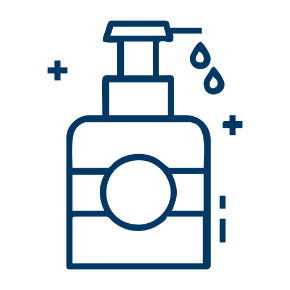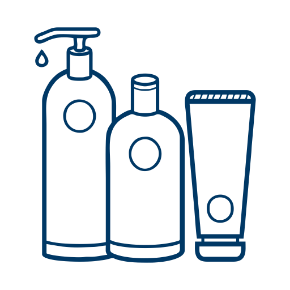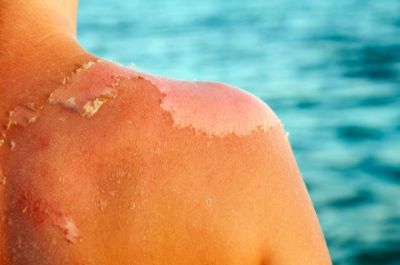Sunburns occur if the skin gets too much UV radiation (i.e. from the sun or artificial sources such as tanning beds) with minimal proper protection. Overexposure of the UV rays, mainly UVB, and minimal sun protection leads to changes in the top layer of the skin (epidermis) that leads to rough texture as well as redness of the skin 1. Sunburns initially lead to observable skin erythema 3-5 hours after exposure, which then peaks at 12-24 hours and subsides at 72 hours.
What are the different types of sunburns?
The majority of sunburns are mild and are known as first-degree sunburns, which cause some erythema (redness) and can be painful when touching the sunburned skin. This type of sunburn only affects the outermost layer of the skin 2 and are typically able to be treated at home.
Severe sunburns, such as second and third-degree sunburns, are characterized by intense erythema (redness), pain, blistering, swelling and sometimes, can result in headaches, chills, fatigue, abdominal pain or even a fever 2. These severe sunburns compromise the integrity of the protective skin barrier and the ability of the body to maintain a balanced state 2. When this occurs, seeking medical attention is strongly recommended as there may be a concern for sun poisoning.
Steps to care for sunburned skin:
- Keep Your Cool: The most important initial step is cooling and protecting the skin. Move to a sun protected area and apply cool compresses to the exposed sunburned skin to help relieve any discomfort, heat and burning. Cooling the skin prevents further heat loss from the skin and helps to maintain thermal regulation of the body.
- Stay Hydrated: A sunburn draws the fluid from the skin’s surface and so it is essential to stay hydrated and quench your skin’s thirst as this will help reduce recovery time.
- Moisturize: The epidermis is compromised when sunburned which causes the skin to experience water loss, peeling and an increased risk for infections. Moisturizers containing ceramide, glycerin, shea butter, Vitamin E, hyaluronic acid and other hydrating ingredients may help reduce signs of sunburned skin. A helpful tip is to place your moisturizer in the refrigerator for a few hours prior to application as the cooling sensation will further help to soothe irritated skin.
- SPF: Protecting sunburned skin from further UV sun damage is crucial as sunburned skin has a compromised protective skin barrier. Sunscreens containing mineral sunscreen such as zinc oxide or titanium dioxide are ideal as these ingredients are often considered to be mild for sunburned skin.
- Pain Relievers: Non-steroidal anti-inflammatory medications, available over-the-counter will usually help reduce the redness, pain and swelling. Discuss with your doctor before taking over-the-counter pain relievers.
- Aloe: Aloe vera is derived from the succulent plant, Aloe, found around the world, primarily in warm, dry climates 3. Aloe vera has been found to be hydrating and can help to lock in moisture and soften the skin. Aloe vera’s most prominent benefit for the skin is its soothing properties, which makes it great for treating signs of sunburns.
- Vitamin E: Vitamin E is an antioxidant that helps to decrease skin inflammation. Use the oil in a Vitamin E capsule and rub it gently onto the sunburned skin to help protect the skin from further UV ray damage 4. Vitamin E oil may also help reduce skin burning and itching.
Avoid Picking and Popping: Blisters may occur as the top layer of the sunburned skin loses its integrity. To reduce scarring and risk of skin infection, avoid popping skin blisters or peeling off dry, flaking skin.







